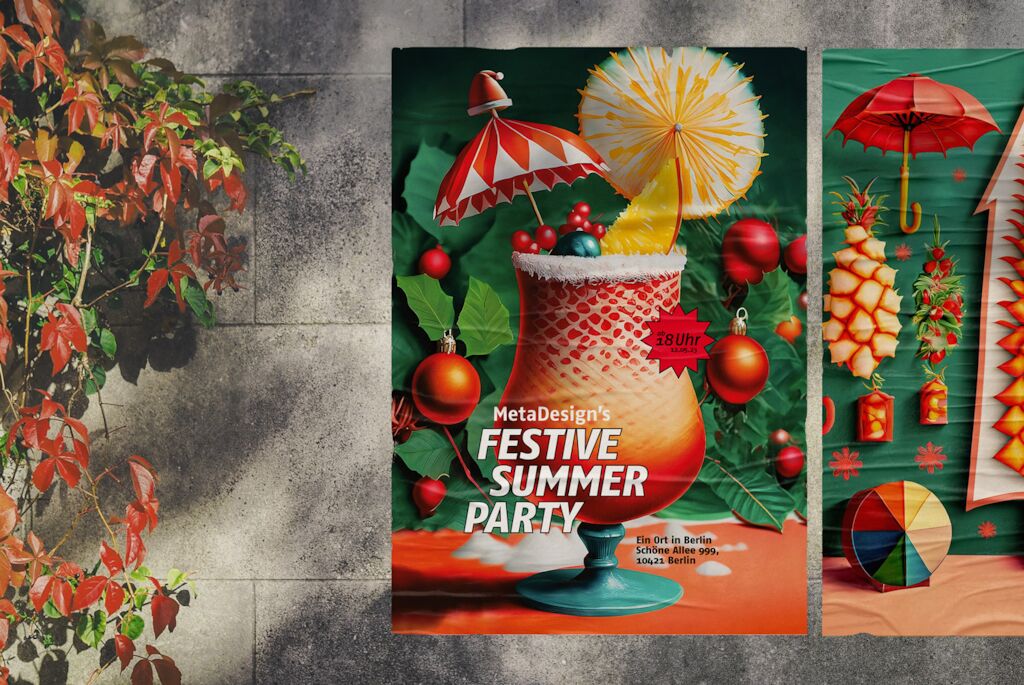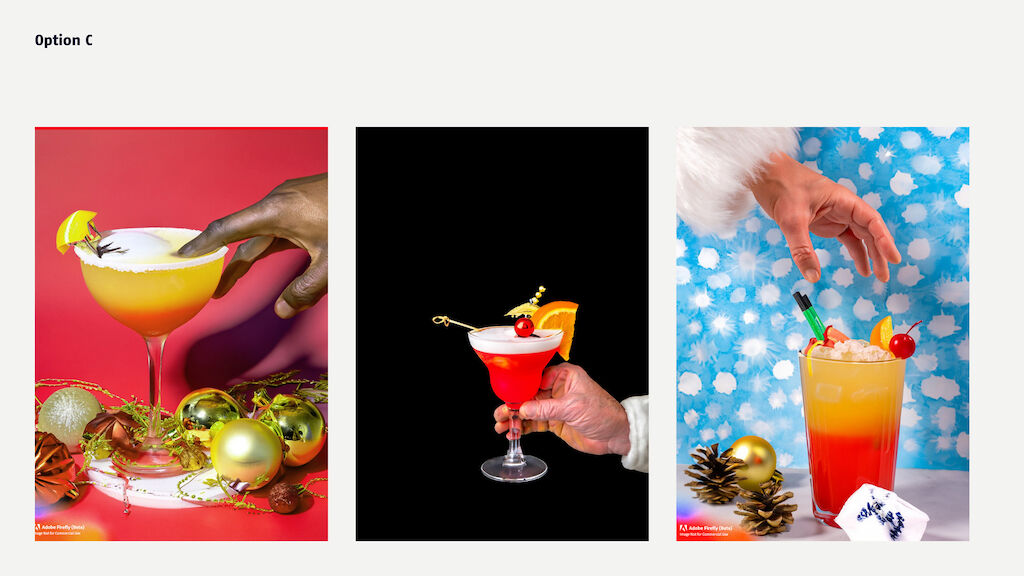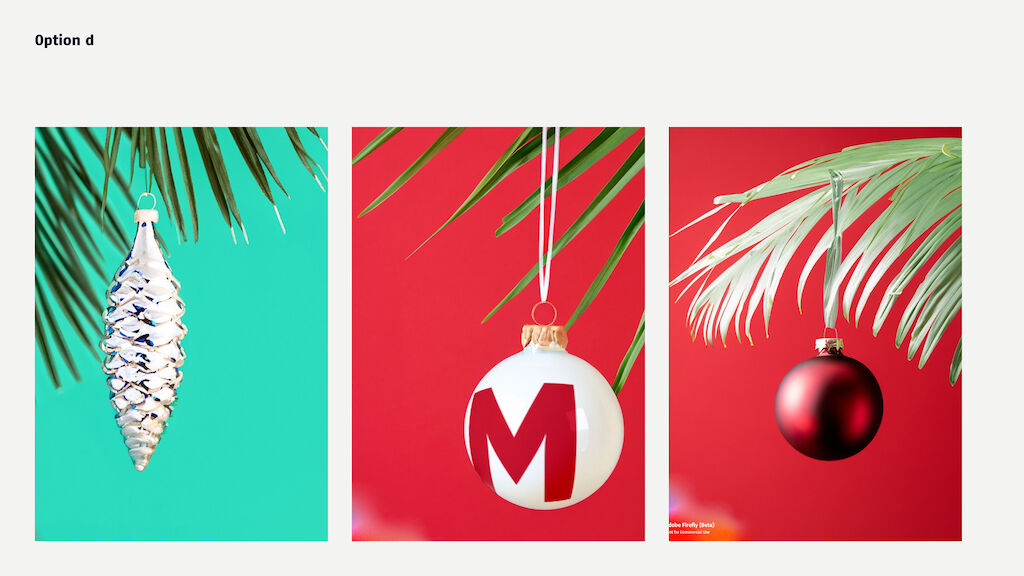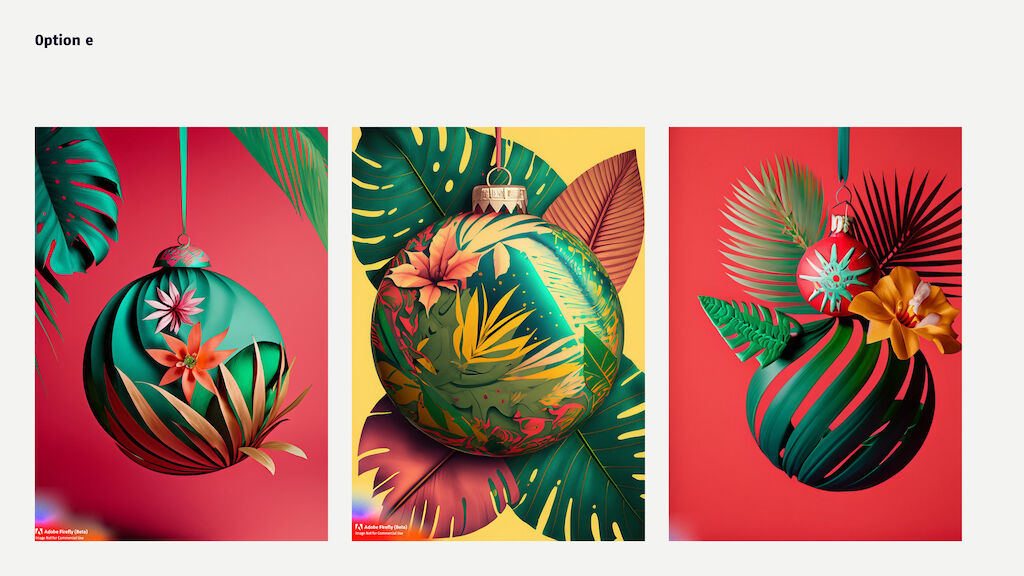
Blog
Revolutionizing Graphic Design with AI-Generated Images: In 5 steps

"A painting of a summer A painting of a summer cocktail with red and orange tones, featuring a slice of pineapple and colorful umbrellas as decoration, with some Christmas decoration, touched by Santa Claus hand, on a table surrounded by lush greenery."
Designers rarely hear the words “Do what you want,” which represent the epitome of creative freedom. However, this directive comes with an unspoken paradox: “Make it breathtakingly beautiful, like nothing ever seen before!” When I was given the freedom to create a summer party poster for our Christmas celebration, I felt both excitement and apprehension.
Combining summer and Christmas became the central focus of my creative challenge, which presented its own difficulties. Graphic designers possess a wide range of skills for layouts, icons, videos, and logos, but delving into 3D art, illustration, painting, or photography requires specialized expertise. Time constraints also increase the risks of investing days into an idea that may not work. To navigate this challenge, I relied on simple typography, icons, and stock libraries—my reliable tools.

"An 3d artwork of a palm tree with Christmas decoration, in a style of Salvador Dalí, depicted as a series of geometric shapes in a bright and bold color palette, adding a modern twist to traditional holiday decor."
Enter the era of AI generators like DALE2, Midjourney, and the Adobe Firefly, which redefine the design landscape. By adding phrases like “like a painting” or “like an illustration,” designers can tap into a vast range of artistic techniques effortlessly. In this tutorial, I share my personal journey using Adobe Firefly and the remarkable results it produces. Intriguing prompts accompany the showcased images, demonstrating the limitless versatility of this innovative tool.

"A Summer cocktail in the style of painter Salvador Dalí, with some Christmas decoration, touched by Santa Claus hand."
1. Cultivate Inspiration:
In my case, I explore captivating concepts that embody both summer and Christmas, such as a summer cocktail, Hawaiian dancers with Christmas pyramids, or a whimsical scene featuring Mary and Joseph in swimwear at a fishing lodge.
2. Harness Sentence Generators:
Use platforms like flowgpt.com to infuse your design journey with inventive ideas. Explore styles, colours, and elements that align harmoniously with Firefly's capabilities.
3. Test the prompt in Firefly:
Brave the enigmatic nature of Firefly's artistry. Keep in mind that faces and bodies can pose challenges. For example, depicting the Holy Family may result in fused combinations of Mary and Joseph or diverse interpretations of Jesus.
4. Play with the prompt:
Fine-tune your prompts with precision, delicately adding or subtracting details to achieve a magnificent transformation. My wife had the best idea to add “in the style of Dalí” to the text, for unexpected and astonishing results.
5. The Art of Selection:
Create multiple versions and choose the best one. Make around 20 to 40 versions, and select the most compelling design to present to clients or colleagues.
After they decided on a route, I cleaned up the pictures with Photoshop, changed the colours and copied some details from other pictures. So yes, I cheated a bit :-). After that, I designed the poster graphically.

"A foto of a minimal Christmas decoration hanging from a palm tree, one color background."
AI image generators mark a new era in graphic design, unlocking unprecedented creative potential. Each word spoken carries profound weight, transforming concepts into awe-inspiring creations. With access to famous styles, designers can transcend boundaries and reshape the creative landscape.

"An abstract photography of a Christmas ball adorned with tropical motifs, in the style of Salvador Dalí, such as leaves and flowers, suspended from a palm leaf against a red background, representing a unique fusion of holiday and summer themes."
However, limitations still exist. Unique and complex concepts may be challenging to represent visually, while more common ideas find easy expression. As technology shapes our creative journey, we must remain vigilant, ensuring that the loss of certain thoughts doesn't hinder groundbreaking ideas.
Yet, our unwavering belief in progress drives us forward. Let's remember the initial scepticism surrounding digital photography and let our optimism soar, placing our trust in the indomitable spirit of innovation once again.